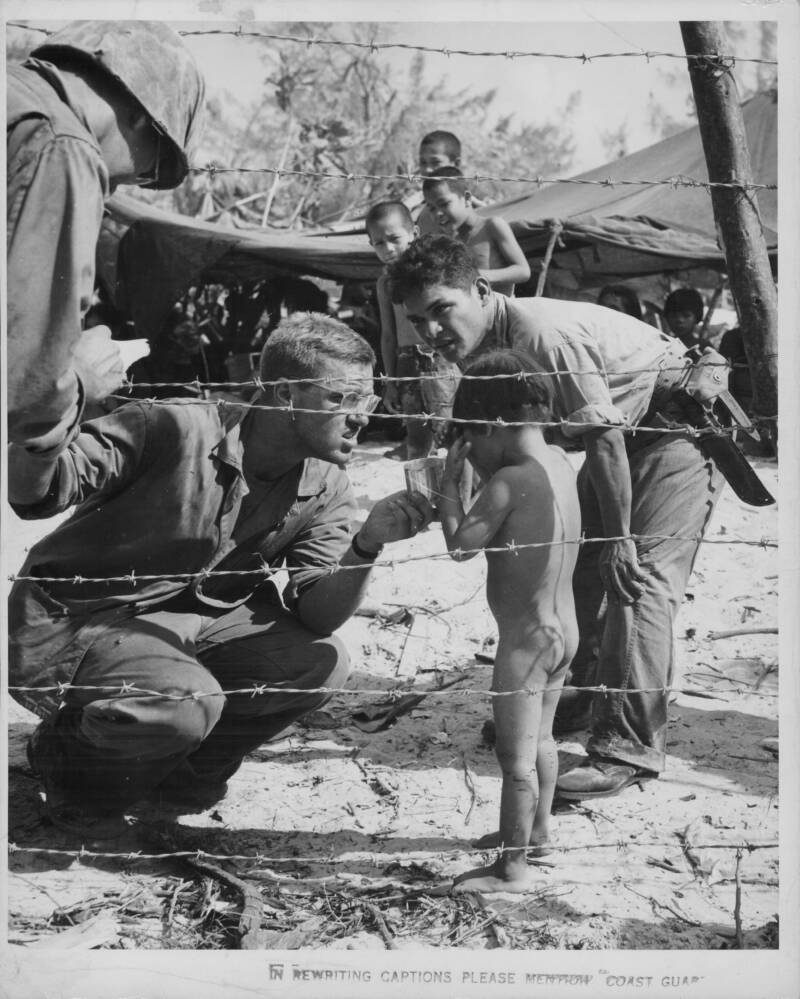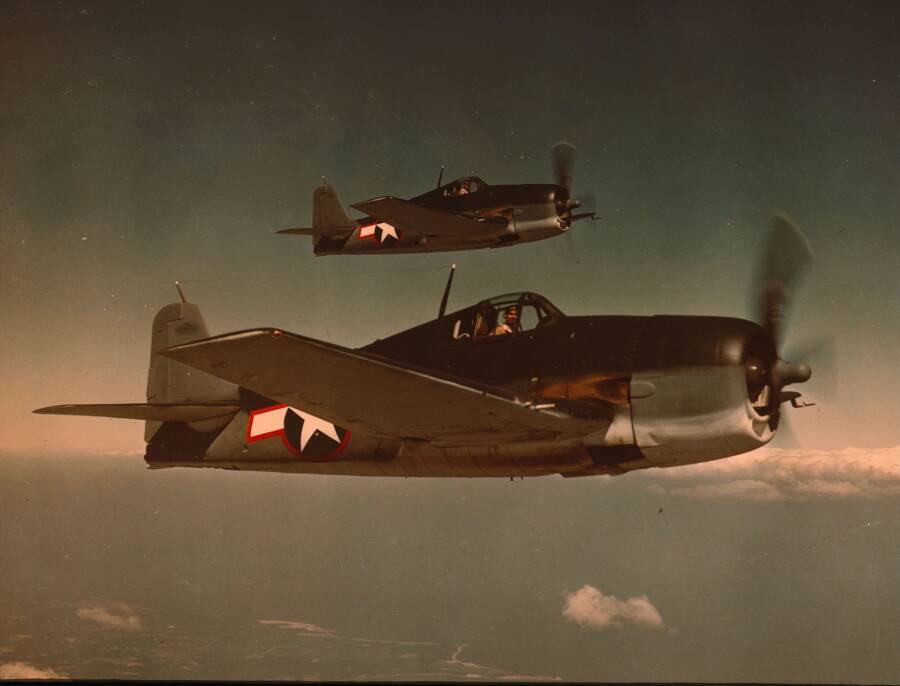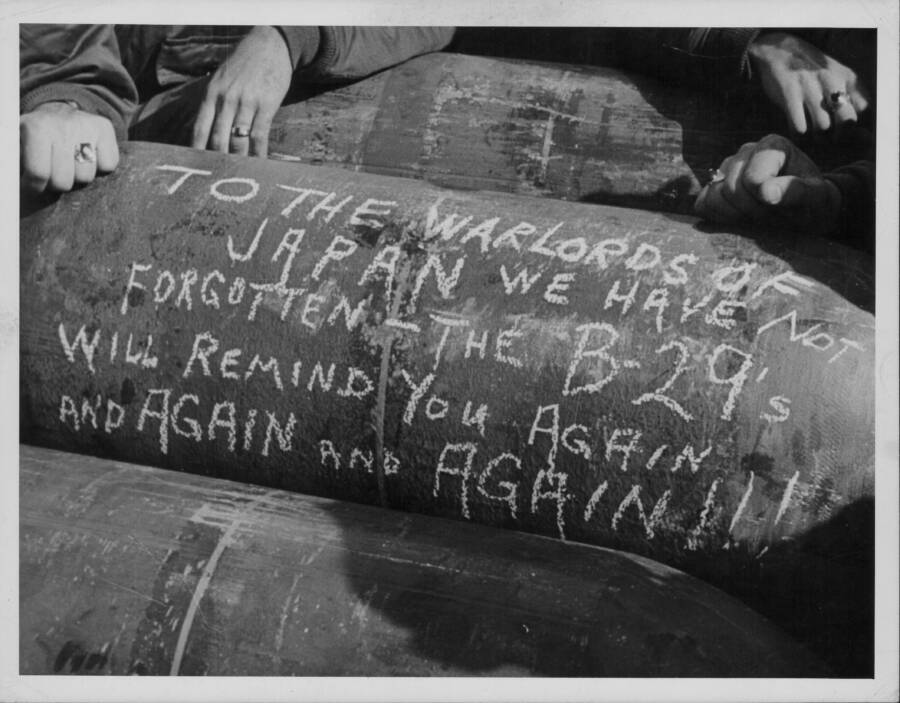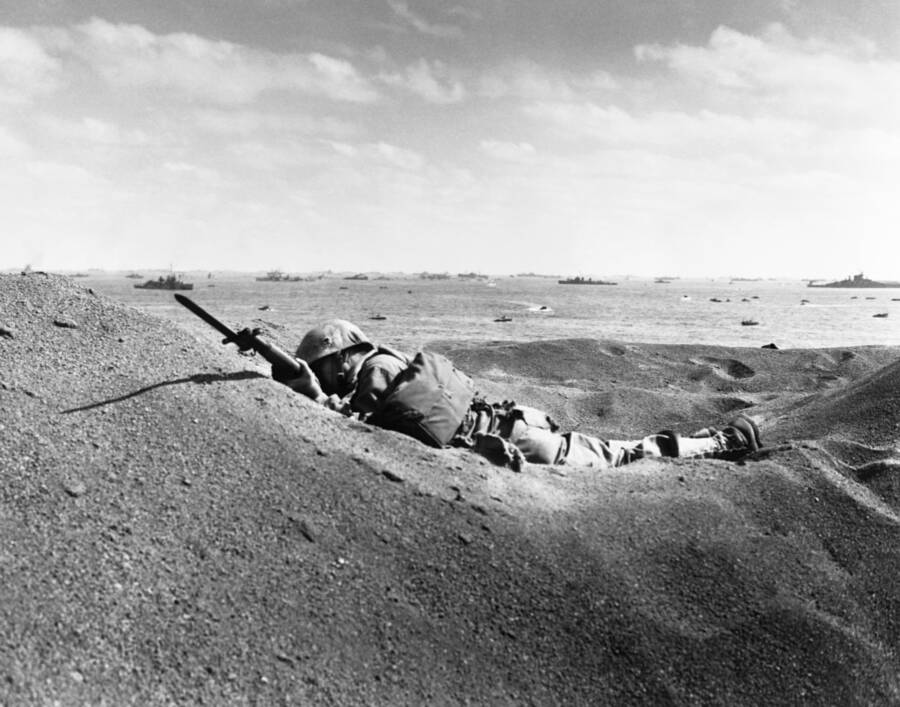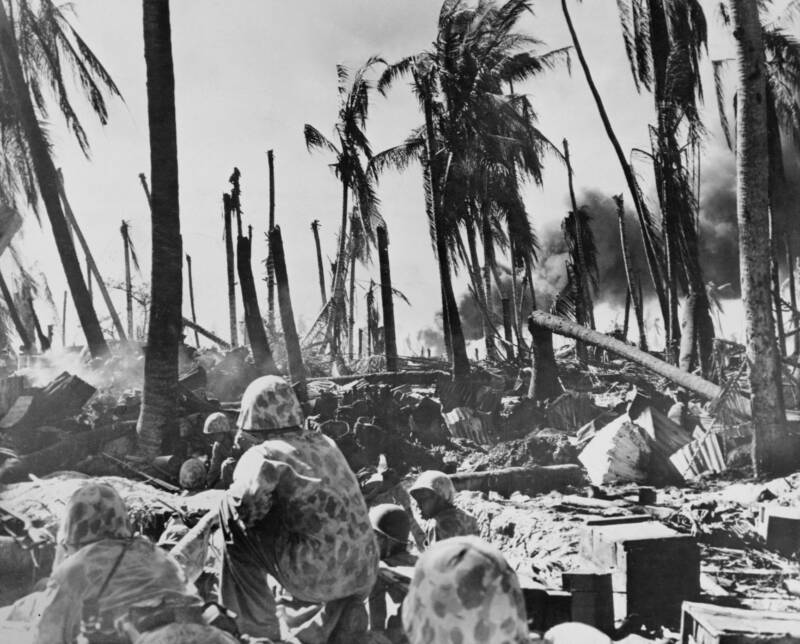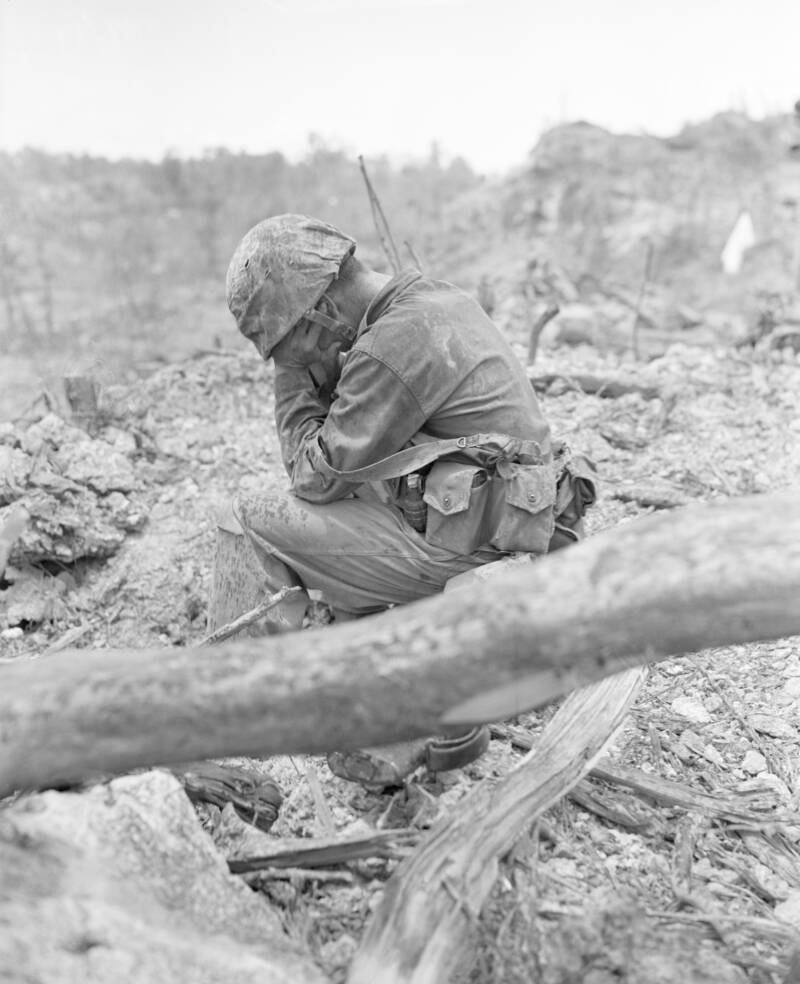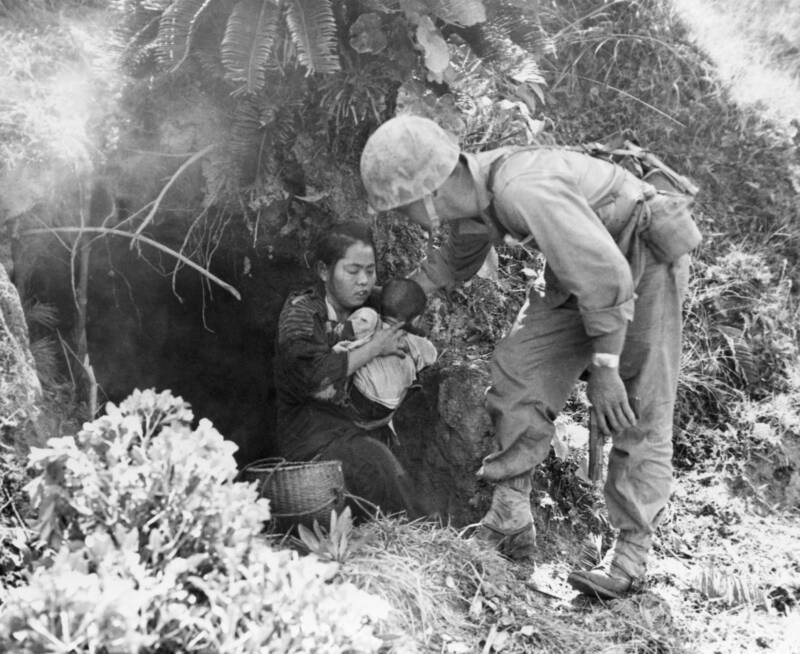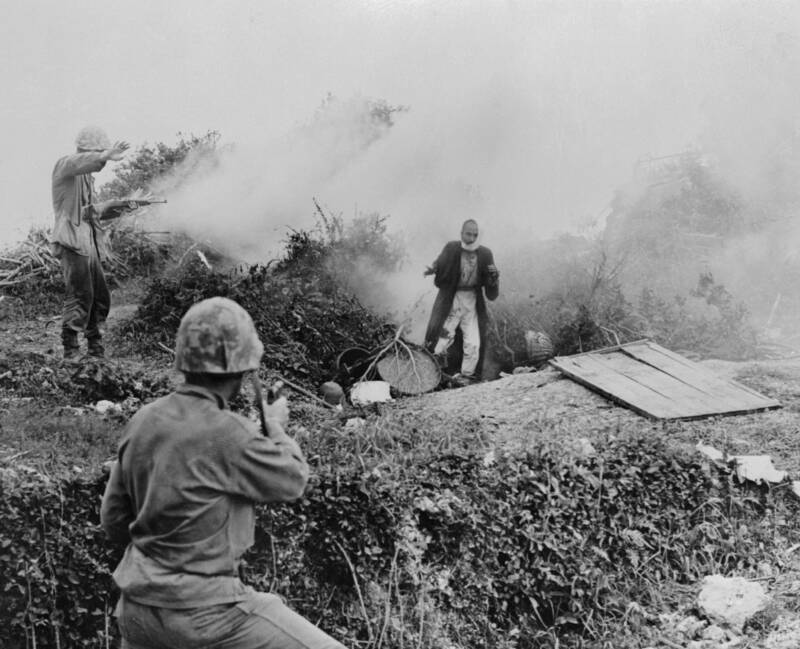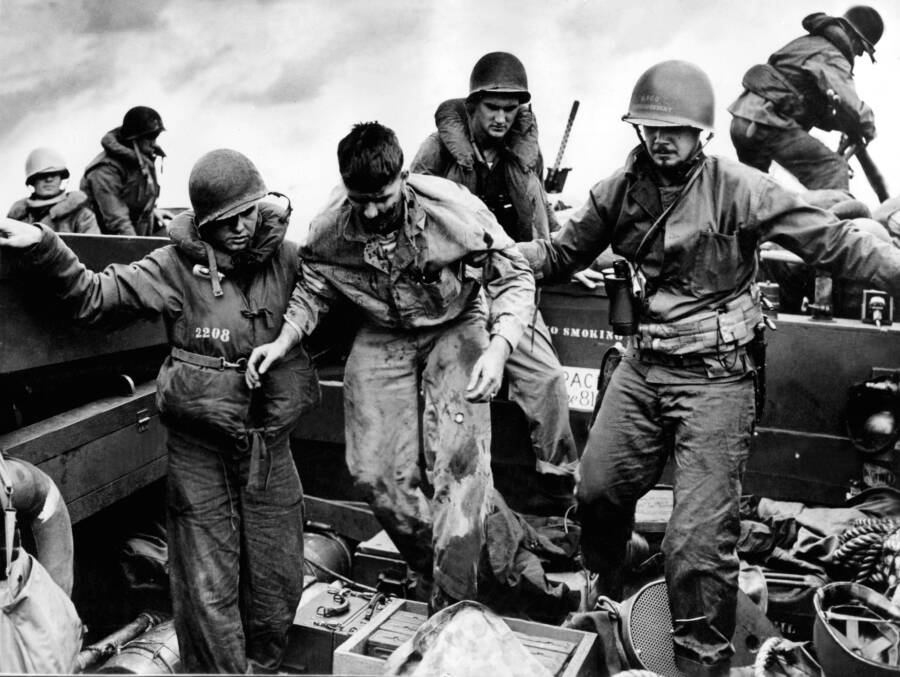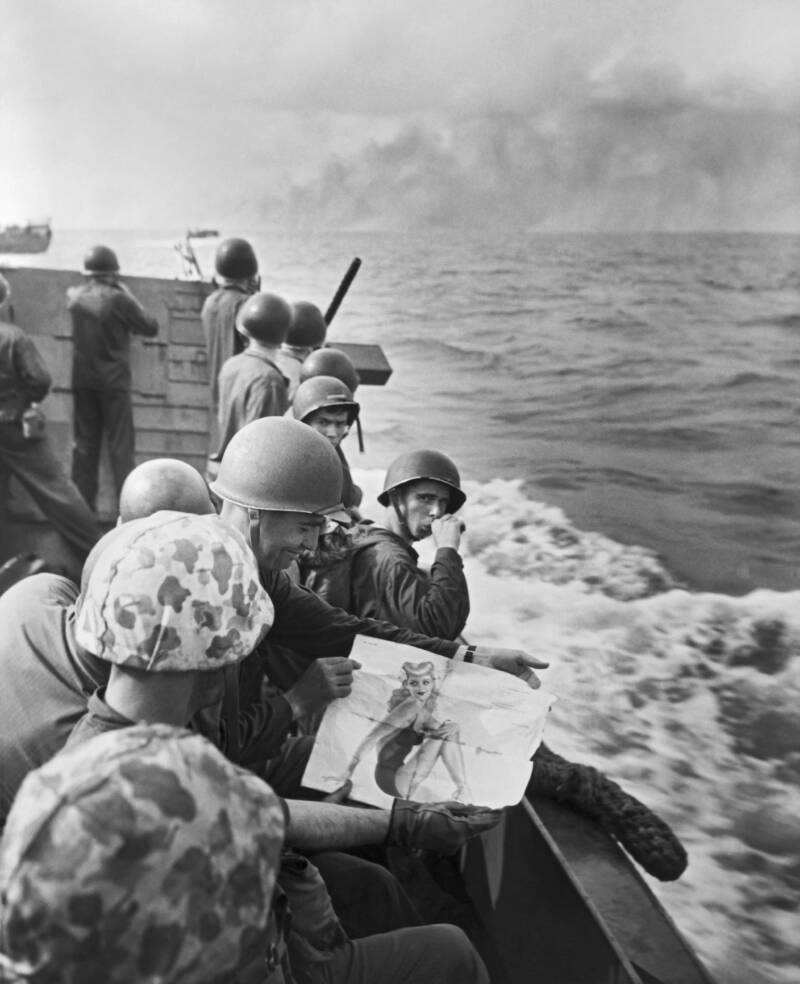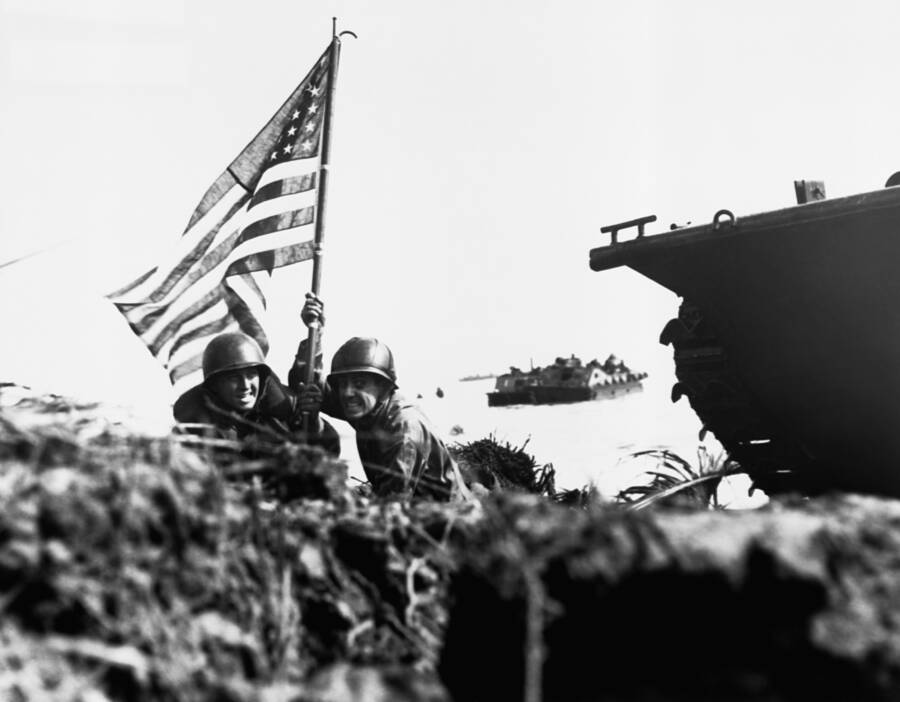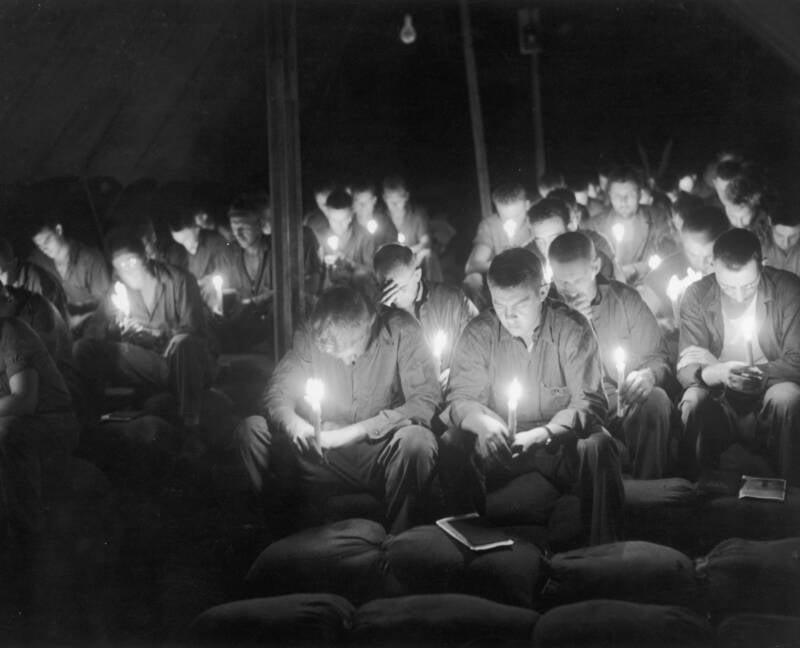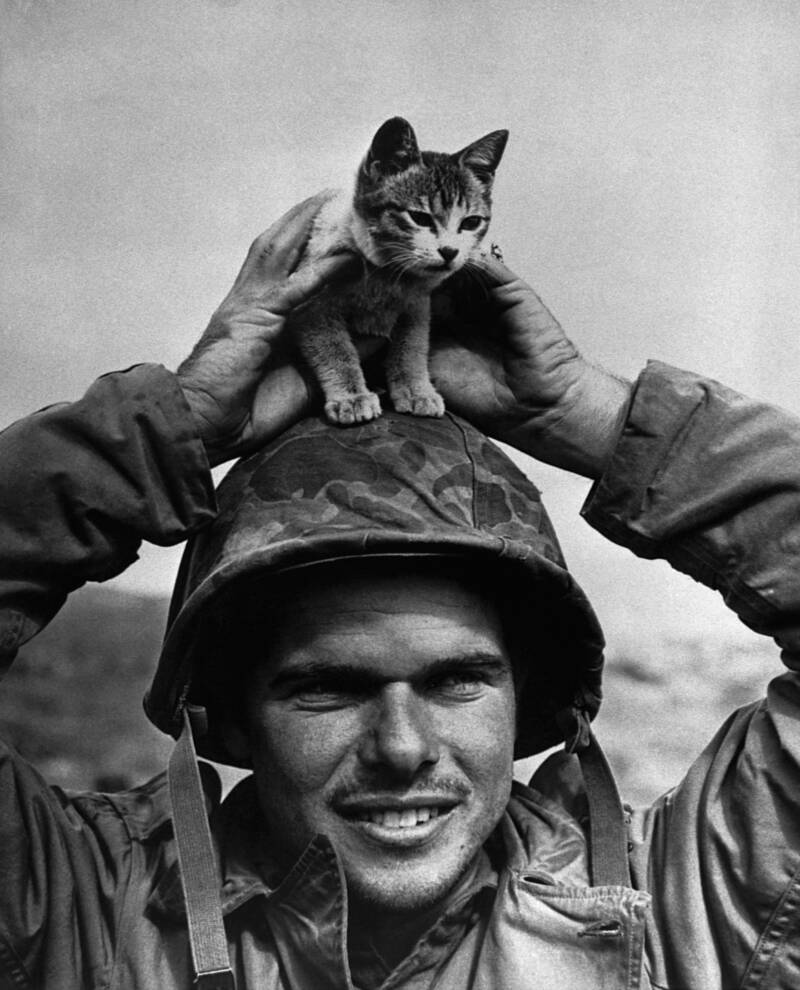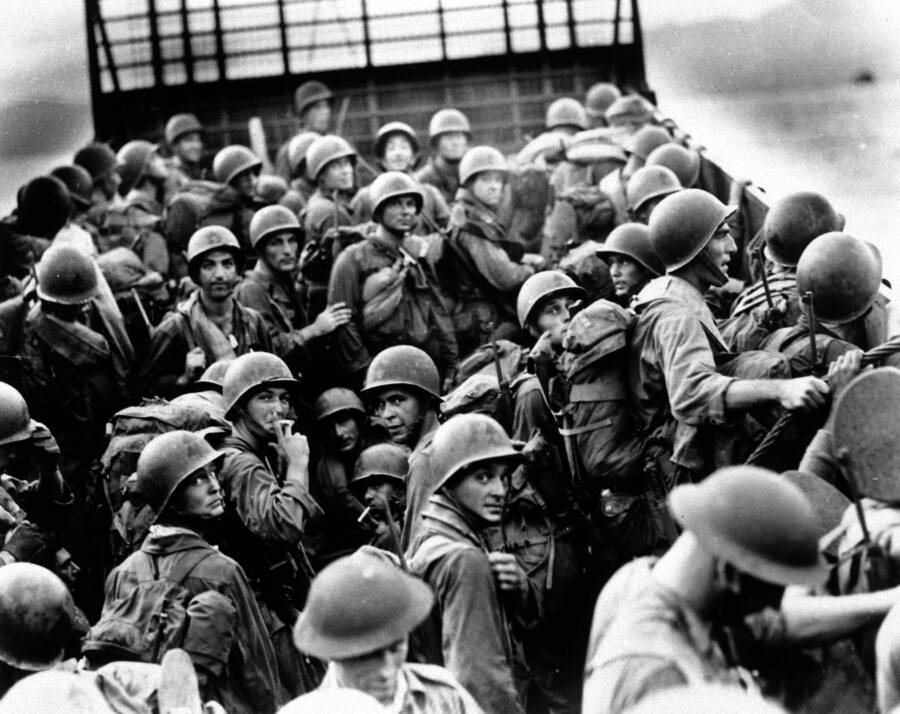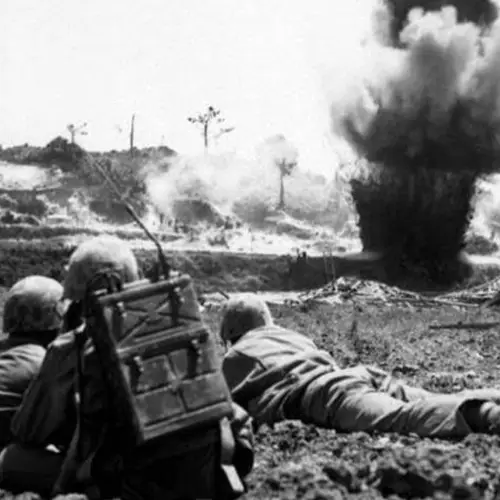While the Nazi war machine ravaged Europe, the war in the Pacific brutalized the soldiers and civilians in World War II's often overlooked theater.
Most of what we hear about World War II is what unfurled in Europe. The movies we make and the stories we tell are almost invariably about D-Day, the Holocaust, and the Americans thwarting Nazis. The battles fought in the Pacific War are thus vastly overshadowed.
But the Pacific Theater of World War II was, in its own right, a stage for a number of brutal battles too. The casualties sustained in the Pacific Theater of World War II numbered around 36 million — about 50 percent of the war's total casualties.
The fighting in the Pacific Theater was wrought with the same hatred, nationalism, and war criminality that raged across Europe. Perhaps it was for its raw barbarism that the Pacific War is often skimmed over in history class.
The Attack On Pearl Harbor And The Start To The Pacific War

US Navy/Interim Archives/Getty ImagesThick smoke billows from stricken American warships. From left, U.S.S. West Virginia and U.S.S. Tennessee.
The Pacific War began at sunrise on Dec. 7, 1941, when the skies above Pearl Harbor filled with hundreds of Japanese fighter planes, while simultaneously in Southeast Asia, Japan attacked multiple countries.
While America was prepared for the possibility of a Japanese attack, and in fact, over half of the public in a nation-wide Gallup poll specified that they felt a Japanese attack was indeed imminent, they hadn't imagined it would be at Pearl Harbor.
However, Franklin D. Roosevelt had allegedly been warned three days before the attack that Pearl Harbor was in danger. The theory is that Roosevelt ignored this 26-page memo detailing Japan's possible motives because he wanted an excuse to enter a war against Japan.
As such, the notion that Pearl Harbor was a "surprise attack" is believed to be a myth.
Regardless, the Americans would claim that while they thought the Japanese might issue a surprise attack, they figured it would be on a colony in the South Pacific, rather in Hawaii, some 4,000 miles away.
The attack that opened the Pacific War was so unexpected to the officers at Pearl Harbor at least, that at first they didn't even understand what was happening. One soldier, as the first bombs dropped, remarked to a friend: "This is the best goddamn drill the Army Air Force has ever put on."
Within minutes, a 1,800-pound bomb smashed through the U.S.S. Arizona and sent it underwater with more than 1,000 men trapped inside. Then another set of bombs took down the U.S.S. Oklahoma with 400 sailors aboard.
The entire attack was over in less than two hours, and by the time it was done, every single battleship in Pearl Harbor had sustained serious damage. American bases in Guam, Wake Island, and the Philippines were also attacked.
The United States wasn't the only country to be attacked. The Japanese also attacked the British colonies of Malaya, Singapore, and Hong Kong, and Allied forces from the United Kingdom, New Zealand, Canada, and Australia all contributed to the fighting in the Pacific Theater.
Japan also invaded Thailand and had already stormed China, which would see the bulk of civilian casualties in the Pacific theater.
With these attacks, the U.S. entered into World War II — and they'd nearly lost their entire Pacific Fleet in the process.
It was a major victory for the Japanese. But in winning it, they awakened the enemy that would destroy them.
Indeed, after the war, the Japanese Admiral Tadaichi Hara said : "We won a great tactical victory in Pearl Harbor and thereby lost the war."
Propaganda In The Pacific Theater
https://www.youtube.com/watch?v=y7DsFEwh2k4
Hitler's sweep through Europe had left Americans concerned, but Pearl Harbor gave them a reason to take action. From 1941 to 1942, enlistment numbers in the American military more than doubled.
Following the attack on Pearl Harbor, racial hatred for the Japanese, even if they were American citizens, burgeoned across the country.
Even TIME Magazine reported: "Why, the yellow bastards!" and the lyrics "We're Gonna Find A Fellow Who Is Yellow And Beat Him Red, White, And Blue" were commonly crooned.
Within two months, Japanese-Americans were rounded up and forced into internment camps. Almost overnight, some 120,000 people of Japanese ancestry were locked up purely for their heritage. By the end of the Pacific War, the Japanese would sustain the second most casualties, with over one million soldiers killed or missing.
Japanese Warfare In The Pacific War
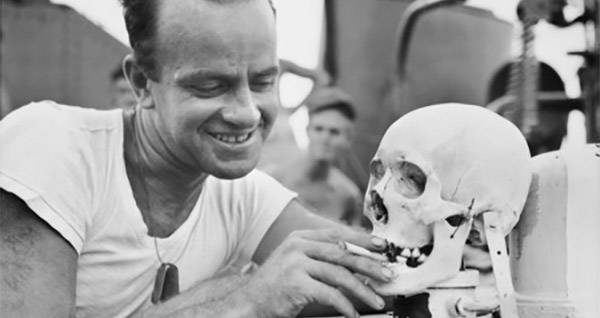
Wikimedia CommonsAmerican sailor with the skull of a Japanese soldier.
The Pacific Theater of World War II was, as one historian put it, "hands down the war's most hated theater in which to fight."
And as the hundreds of thousands of American men who had just enlisted were about to learn, it was going to be more brutal than anything they would see in Europe.
That's in part because the Japanese didn't fight by the same rules used in Europe. They had signed the Geneva Convention in 1929 but failed to ratify it, and as such, had no incentive to treat a prisoner of war as the agreement had stipulated.
Even before America had joined the war, the Japanese had already demonstrated just how brutal they could be. They'd subjected the Chinese to the Rape of Nanking, human experimentation, and war crimes too horrible to describe.
Their culture, at the time, was ruled by a state-controlled version of Shinto. They believed that a soldier should die honorably: surrendering was a disgrace.
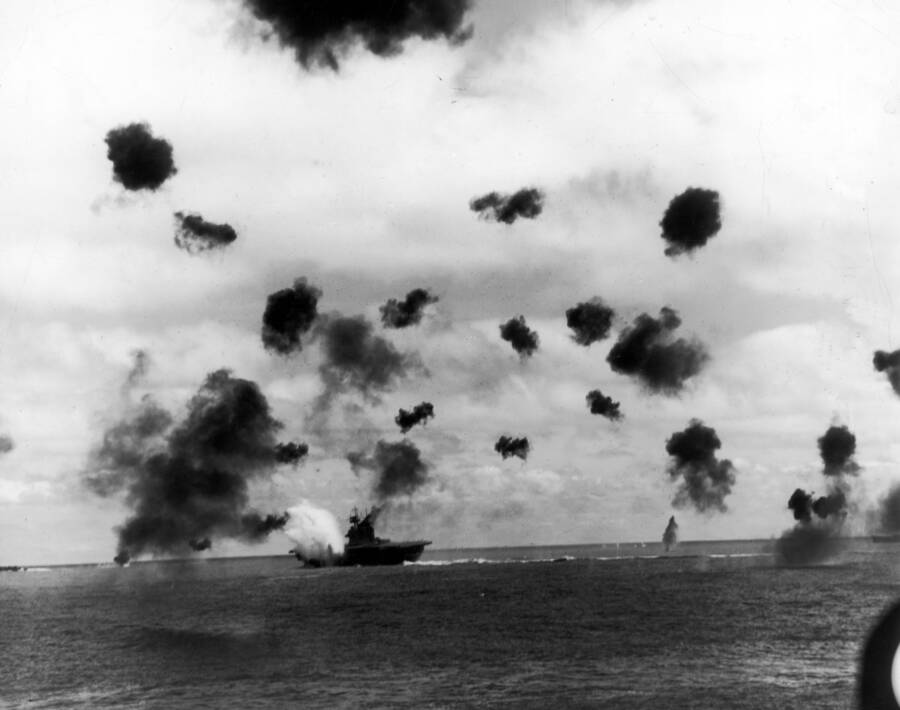
US Navy/The LIFE Picture Collection/Getty ImagesSmoke from antiaircraft guns fills the sky as aircraft carrier USS Yorktown is hit by a Japanese torpedo during the Battle of Midway. Pacific Ocean. June 6, 1942.
They told their prisoners of war outright that they saw no value in their lives. One Capt. Yoshio Tsuneyoski told a group of American captives:
"We do not consider you to be prisoners of war. You are members of an inferior race, and we will treat you as we see fit. Whether you live or die is of no concern to us."
He was echoing an order that had come straight from Tokyo. The War Ministry of Japan had explicitly told its men: "It is the aim not to allow the escape of a single one, to annihilate them all, and not to leave any traces."
Torture And Human Experimentation
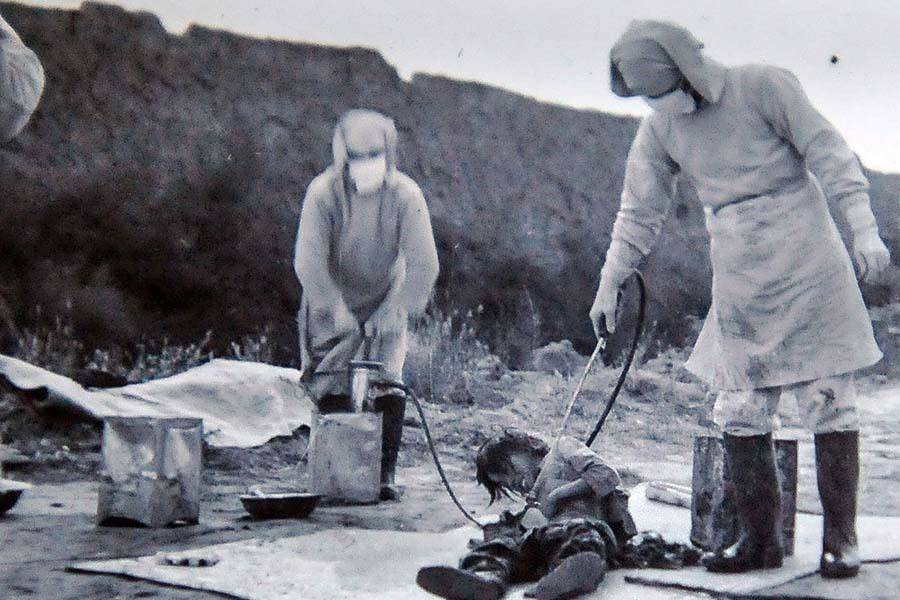
Xinhua via Getty ImagesUnit 731 personnel conduct a bacteriological trial upon a test subject in Nongan County of northeast China's Jilin Province. November 1940.
The Chinese weren't the only ones subjected to human experimentation by the Japanese. Some American prisoners-of-war were subjected to horrific experiments as well.
One group of soldiers who crash-landed onto Kyushu Island in 1945 were carried off by a group of Japanese soldiers who told them that they would treat their injuries. Instead, they brought them to a facility for experimentation.
One had seawater injected into his bloodstream to see how it would affect him. Another had his lung surgically removed so that the doctors could watch how it affected his respiratory system. And another died when a doctor drilled into his brain to see if it would cure epilepsy.
"The experiments had absolutely no medical merit," an eyewitness to their deaths, Japanese doctor Toshio Tono said. "They were being used to inflict as cruel a death as possible on the prisoners."
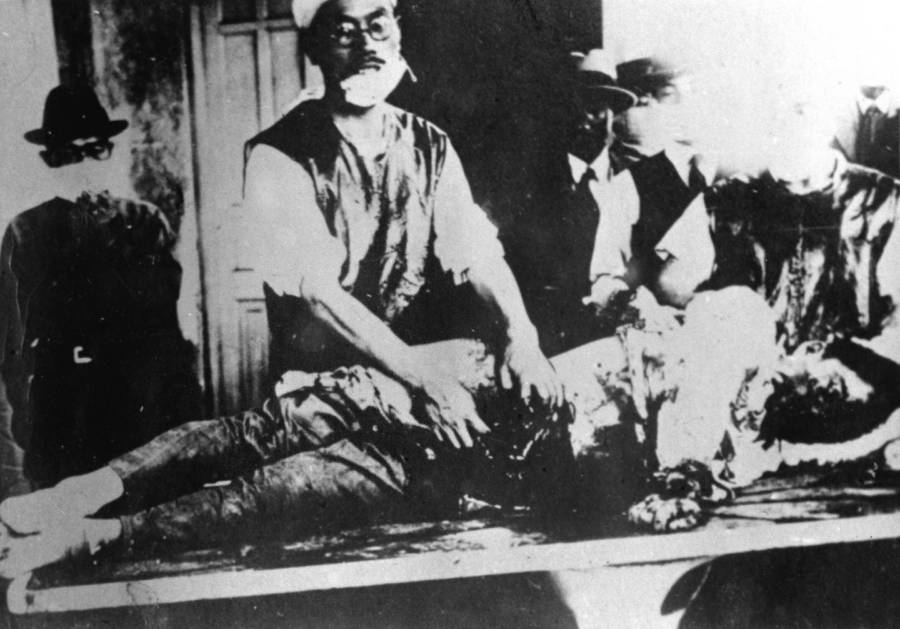
Xinhua via Getty ImagesA Unit 731 doctor operates on a patient that is part of a bacteriological experiment. Date unspecified.
Indeed, many more were simply subjected to the cruelest deaths possible without any attempt to disguise the torture as science.
Some prisoners reported being tied to a stake under a blazing summer sun with a glass of water just out of reach. The Japanese guards would watch and laugh as the victim struggled.
Others say they were force-fed water, then tied to the ground while guards jumped on their stomachs. Still more reported that the guards would start each day by the names of ten men who would be forced to go out and dig their own graves.
Human Cannibalism
In the Pacific War, it was not uncommon for Allied soldiers to stumble upon scenes straight out of a horror film.
Australian Corporal Bill Hedges described finding a group of Japanese soldiers in New Guinea cannibalizing the flesh of his brothers in arms:
"The Japanese had cannibalized our wounded and dead soldiers. We found them with meat stripped off their legs and half-cooked meat in the Japanese dishes...I was heartily disgusted and disappointed to see my good friend lying there, with the flesh stripped off his arms and legs; his uniform torn off him."
This wasn't the desperate act of starving men. The Japanese soldiers, Hedges says, had plenty of rice and cans of food to eat. This was an act of hatred.
This wasn't even an isolated event nor was this was the act of a lone, crazed crew. Japanese orders have been uncovered explicitly giving their men permission to eat the dead. One note, signed by Major-General Tachibana, read:
"ORDER REGARDING EATING FLESH OF AMERICAN FLYERS:
I. The battalion wants to eat the flesh of the American aviator Lieutenant Hall.
II. First Lieutenant Kanamuri will see to the rationing of this flesh.
III. Cadet Sakabe will attend the execution and have the liver and gall bladder removed."
Another Japanese officer, Col. Masanobu Tsuji, even berated his men if they failed to join him in eating the flesh of the dead.
"The more we eat," Tsuji said, "the brighter will burn the fire of our hatred for the enemy."
American War Crimes
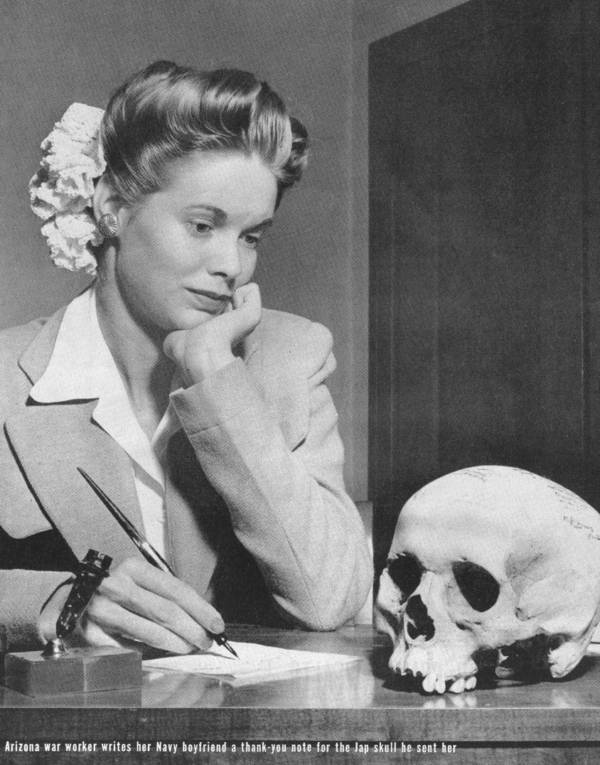
Ralph Crane, Time & Life Pictures/Getty Images via Wikimedia
A young woman stares admiringly at the Japanese skull her lover sent her from the Pacific Theater. May 22, 1944.
The Japanese were not alone in their war crimes. The Americans, too, brutalized their enemies.
One U.S. Marine colonel ordered his men to "take no prisoners. You will kill every yellow son-of-a-bitch and that's that."
Some, however, went beyond just killing their enemies. Across the Pacific War, American soldiers would skin the bodies of the dead Japanese, boil their bones clean, and keep them as souvenirs.
At least one soldier sent his lover a Japanese soldier's polished skull as a gift, while another sent the President himself a letter opener made from a dead soldier's arm bone.
"This," Roosevelt reportedly said looking over the severed body part of a Japanese soldier, "is the sort of gift I like to get."
One particularly brutal mass grave was found in the Mariana Islands. After the war ended and the Japanese began to collect their soldiers' remains, a mass grave of Japanese soldiers was found. 60 percent of the corpses were missing their skulls.
Major Battles In The Pacific War
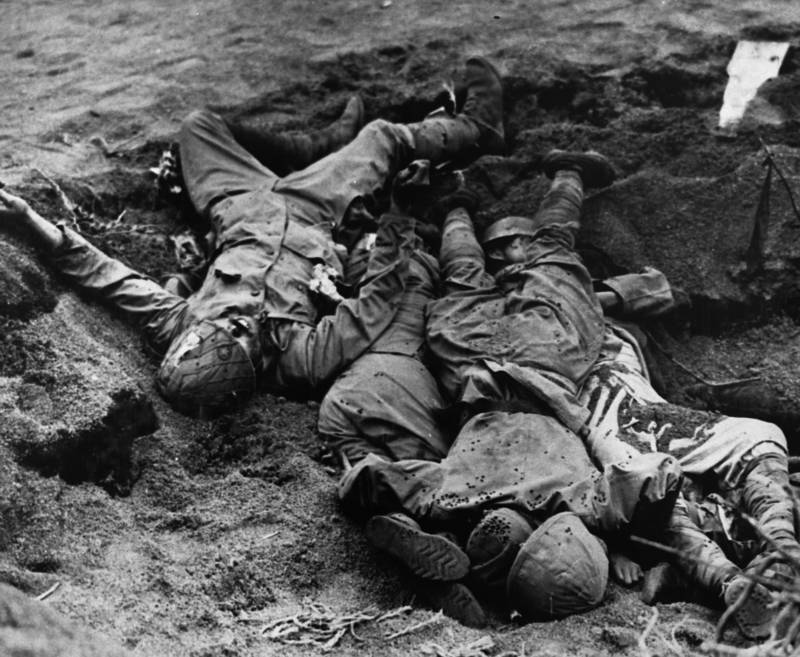
Corbis via Getty ImagesJapanese soldiers lie dead in a shell hole near the airfield at Iwo Jima.
The turning point in the Pacific War for the Americans came in 1943 with the defeat of the Japanese at Guadalacanal. From that point on, the Japanese were on the defensive.
The spring 1945 battle of Iwo Jima then proved to be one of the Pacific Theater's most deadly, when after five bloody weeks when 27,000 American soldiers were left dead or wounded. But it was worth the sacrifice: the Americans had established a firm offensive by this point and were well on their way to victory in the Pacific Theater.
The Pacific War was nonetheless harrowing to the end.
In the final days in the Pacific Theater, American soldiers raided Okinawa. There they experienced what one soldier called "the most ghastly corner of hell I had ever witnessed."
"Every crater was half full of water, and many of them held a Marine corpse. The bodies lay pathetically just as they had been killed, half-submerged in muck and water, rusting weapons still in hand," he continued.
"Swarms of big flies hovered about them Men struggled and fought and bled in an environment so degrading I believed we had been flung into hell's own cesspool."
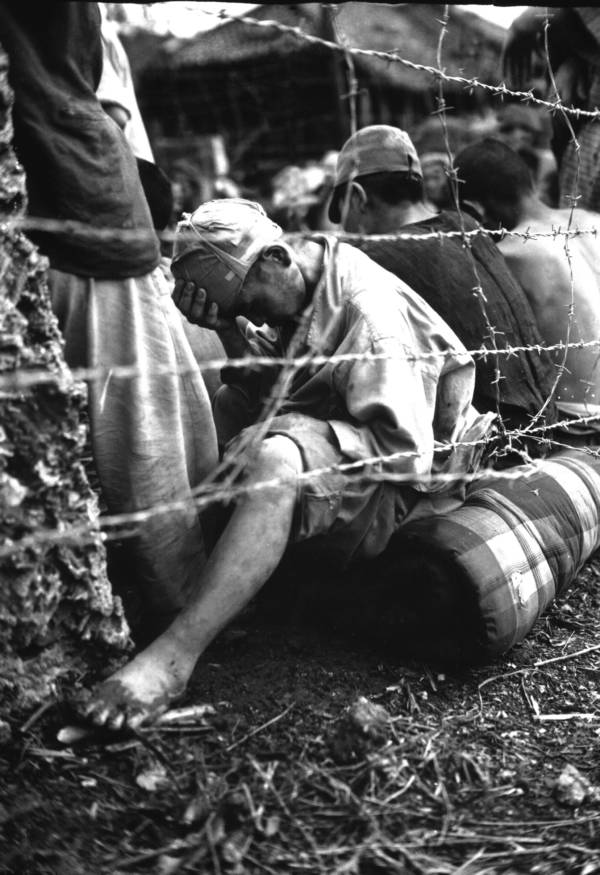
Marine Corp/Wikimedia CommonsJapanese prisoner of war sits dejectedly behind barbed wire after he and some 306 others were captured within the last 24 hours of the Okinawa battle by Sixth Marine Division. Japan, 1945.
The Americans fought the Japanese on every corner of the island and battled against an enemy that didn't always care whether they lived or died. Overhead, kamikaze pilots in planes loaded with bombs flew themselves directly into Allied ships, killing themselves for the chance to take down an American cruiser.
When the battle came to an end, the Japanese commander, Ushijima, lived up to the spirit of his fellow kamikaze. As the American troops closed in on the cave where he hid, Ushijima stepped up onto the ledge, knelt down, and thrust a knife into his own abdomen.
When it appeared that the Americans had won on Okinawa, they celebrated with a rage of debauchery and cruelty.
It's estimated that American G.I.s raped 10,000 women in Okinawa alone.
Victory Day
Traditionally, it's said that the Pacific War ended when America dropped nuclear bombs upon Hiroshima and Nagasaki.
It's a convenient explanation. If the nuclear bomb ended the war, then we could justify the hundreds of thousands of innocent deaths they caused. But not everybody agrees that Japan surrendered because of the bomb.
On Aug. 9, 1945, the same day that Hiroshima was destroyed, the army of the Soviet Union marched into the Japanese-controlled Manchuria. They swept through the territory in a matter of days and liberated city after city.
The approach of the Red Army, some historians believe, may have been the real reason why the Emperor of Japan agreed to surrender. He had been willing to throw his own people to their deaths without end, but the Soviets in Manchuria posed a threat to his own safety.
The Soviets had brutally killed their own Tsar. Historian Tsuyoshia Hasegawa believes that because of this, the Emperor feared that they would be even harsher to him.
It's hard to say whether the atomic bombs ended the war or not, but they certainly helped obscure the lines between good and evil in the Pacific War.
Whatever was left of that line was fully erased in the moments that followed. In the days after the surrender, the U.S. Army made a deal with the Japanese: the U.S. would cover up Japan's human experimentation war crimes if they handed over what they'd learned.

CORBIS/Corbis via Getty ImagesAmerican marines on a Pacific transport relax with accordion music as they sweep the last of the battles in the Pacific Theater. Okinawa. 1945.
Perhaps the ambiguity of good and evil in the Pacific Theater is what keeps it from being a popular discussion in regards to World War II history. Against Nazi Germany, America appeared an obvious hero, fighting against a genocidal monster who exterminated millions in concentration camps. But in Japan, the Americans sacrificed their principles they had to crush an enemy they hated.
There were few stories of straightforward heroes in the Pacific War, and mainly only stories of terror and atrocity.
As actor Tom Hanks said about his own father, who fought in World War II, there "are no glorious stories" about the Pacific Theater of World War II.
After this creepy look at the Pacific Theater of World War II, learn the full story of Pearl Harbor and the Japanese holdouts who kept the war going after Japan's surrender.
